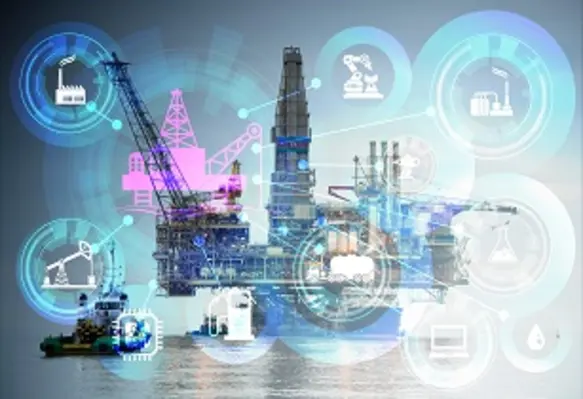The oil and gas industry, often associated with traditional practices and technology which has been in use for decades, is undergoing a transformation driven by the integration of digital technologies
The convergence of IoT (Internet of Things), AI (Artificial Intelligence), and data analytics is reshaping the upstream sector of this industry, propelling it into a new era of efficiency, safety, and sustainability. From exploration to drilling and production, these technologies are redefining operations and optimising processes in ways previously unimaginable.
IoT: the backbone of real-time insights
The Internet of Things (IoT) has emerged as a game-changer in the upstream oil and gas sector. By embedding sensors and devices across exploration sites, drilling platforms, and production facilities, companies can gather real-time data on various operational parameters. This influx of data enables remote monitoring, predictive maintenance, and enhanced decision-making. This not only reduces downtime but also ensures the safety of personnel.
AI: empowering intelligent decision-making
Artificial Intelligence (AI) is revolutionizing how data is analysed and utilised within the industry. Advanced algorithms and machine learning models can process the vast amounts of data generated by IoT devices, identifying patterns, predicting equipment failures, and optimising drilling and production processes. In exploration, AI algorithms can analyse seismic data to identify potential reservoirs with unprecedented accuracy, reducing the risk associated with drilling in unproductive areas.
Data analytics: unveiling insights for efficiency
The treasure trove of data collected from IoT devices is meaningless without effective data analytics. Data analytics tools are being leveraged to transform raw data into actionable insights. With historical and real-time data analysis, companies gain a deep understanding of their operations. This enables them to identify inefficiencies, optimise production schedules, and streamline logistics.
Safety and environmental benefits
The integration of digital technologies isn't just about efficiency and profits; it's also about safety and environmental stewardship. IoT sensors can detect hazardous conditions and trigger automatic shutdowns in critical situations, preventing accidents and safeguarding human lives. AI algorithms can model potential safety risks and suggest preventive measures and digital solutions allow for more accurate monitoring of emissions and their impact on the environment, contributing to regulatory compliance and sustainability goals.
The digital transformation of the upstream oil and gas sector is underway, marked by the symbiotic relationship between IoT, AI, and data analytics. From providing real-time insights to empowering intelligent decision-making and enhancing safety, these technologies are reshaping the industry's landscape.
As companies continue to embrace this transformation, the industry's operational efficiency, environmental responsibility, and safety standards are expected to reach new heights.
This article is authored by Synergy Consulting IFA









